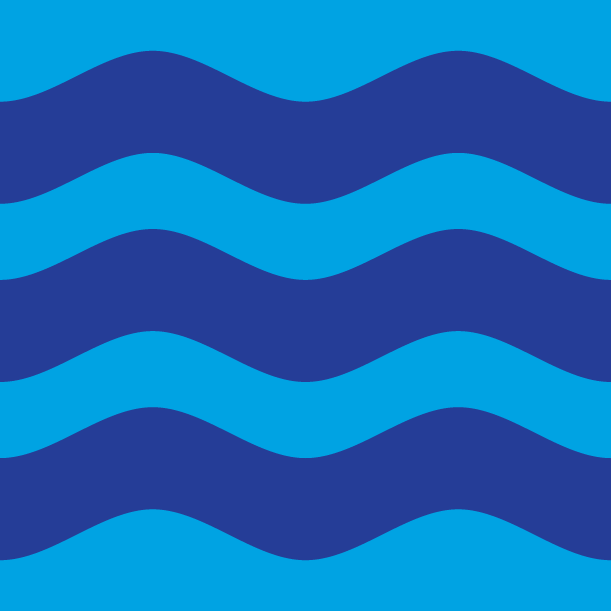Brown Rivers, Red Seas and Pink Lakes
At one of my family cook-outs recently, we started talking about Riverfront Fort Wayne and someone asked why our rivers are so brown when lakes and oceans, and even rivers in other cities, look blue. That’s a question we get a lot, so luckily I had no problem answering. (Believe me, I don’t want to look stupid in front of that tough crowd!) I quickly let them know that the soil in northeast Indiana is made up of very tiny particles that tend to float easily. So, it’s those brown particles we’re seeing when we look at our rivers. They’re even more obvious after a heavy rainfall. The bodies of water that look clearer, or more blue, often have sandier soil that sinks to the bottom.
While I was still patting myself on the back for sounding like an environmental expert, my husband asked what made the Red Sea look red. Are you kidding me? It was time to talk to Alexa. Luckily my nephew has one of those!
So, here’s what I found out from a cool website I plan to visit a lot. Water does have a faint blue tinge, but there are other factors that can affect our perception of the color of the water. Particles in water can absorb light, scatter light and reflect light. Algae or finely ground rock can color the water, or the surface of the water can reflect the sky.
In the case of the Red Sea, the water is blue, but it may appear to be red due to reflections of the surrounding reddish landscape or reddish coral on its seabed. There’s also a theory that the redness comes from the occasional bloom of red Trichodesmium erythraeum algae.
Here are some other examples of uniquely colored bodies of water:
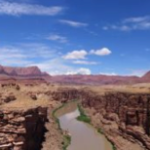 The Colorado River is often a muddy red color because of suspended reddish silt in the water. Reference.
The Colorado River is often a muddy red color because of suspended reddish silt in the water. Reference.
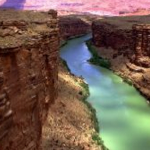 But Marble Canyon viewed from the Navajo Bridge over the Colorado River in this photo is green from the algae bloom in the spring snowmelt. Reference.
But Marble Canyon viewed from the Navajo Bridge over the Colorado River in this photo is green from the algae bloom in the spring snowmelt. Reference.
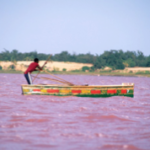 Lake Retba, also known as Lac Rose, is named for its rosy-pink hue. Its high salinity makes it a perfect home for Dunaliella salina algae, which gives the lake its famous color. Reference.
Lake Retba, also known as Lac Rose, is named for its rosy-pink hue. Its high salinity makes it a perfect home for Dunaliella salina algae, which gives the lake its famous color. Reference.
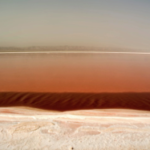 This rusty oasis on the edge of the Sahara Desert consists of three salt lakes: Chott el Fedjedj, Chott el Djerid (pictured), and Chott el Gharsa. Located south of the Atlas Mountains, these dry lakes can take on a variety of colors from salt crystals, including red, when filled with water. Reference.
This rusty oasis on the edge of the Sahara Desert consists of three salt lakes: Chott el Fedjedj, Chott el Djerid (pictured), and Chott el Gharsa. Located south of the Atlas Mountains, these dry lakes can take on a variety of colors from salt crystals, including red, when filled with water. Reference.
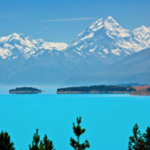 The vibrancy of Lake Pukaki on New Zealand’s South Island is enough to dull the clearest blue sky. This large alpine lake gets its color from the fine-grained minerals running off of the surrounding glaciers. Reference.
The vibrancy of Lake Pukaki on New Zealand’s South Island is enough to dull the clearest blue sky. This large alpine lake gets its color from the fine-grained minerals running off of the surrounding glaciers. Reference.
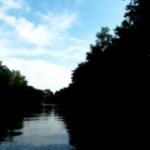 Finally, our own rivers don’t always look brown. Here are some photos I took during one of our Historic Boat Tours that have not been manipulated with Photoshop or any other photo enhancing software. Reference.
Finally, our own rivers don’t always look brown. Here are some photos I took during one of our Historic Boat Tours that have not been manipulated with Photoshop or any other photo enhancing software. Reference.
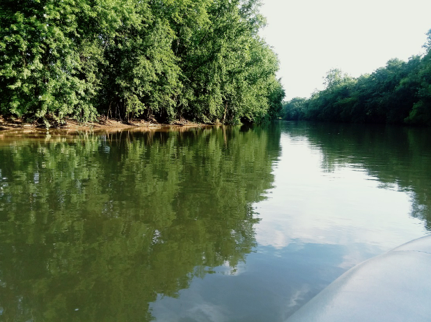
 Natalie Eggeman is the Public Information Officer for the Fort Wayne Parks & Recreation Department.
Natalie Eggeman is the Public Information Officer for the Fort Wayne Parks & Recreation Department.

